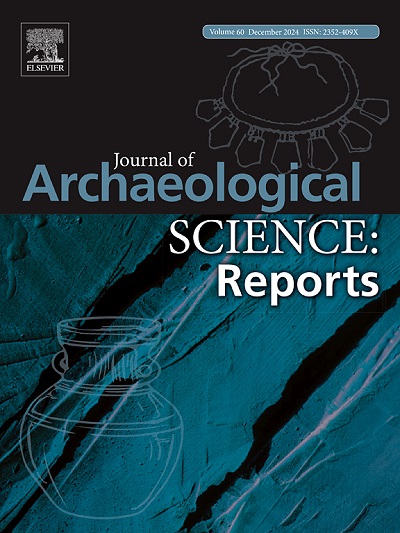Implementing lead isotopes for tracing the source of copper-coated steatite beads from the south Levantine Chalcolithic period
IF 1.5
2区 历史学
0 ARCHAEOLOGY
引用次数: 0
Abstract
Research on the use of copper during the Late Chalcolithic (LC), the first metal-bearing era in the southern Levant, has hitherto neglected an important component – copper-coated steatite beads, uncovered in multiple LC sites and contexts. In this study, we conducted a multifaceted study of green and off-white beads found in 1960 in the Cave of Skulls (Judean Desert, Israel), where the largest LC bead collection known to date was uncovered. For the first time, the green coating was extracted from the beads and analyzed separately. Combining scanning electron microscope and lead isotope analysis (LIA), the study shows that all beads were made of fired steatite, and some were coated with a copper mineral. The LIA results could not trace the origin of the steatite, but point to the either Faynan or Amram Valley in the Arabah Valley as likely sources of the Cu minerals. It is therefore suggested that the green beads were manufactured in two separate processes – one for the production of the steatite beads, and the other for the addition of the copper coating, each taking place in a different location. Tracing the Cu-mineral coating process to the Arabah sheds further light on economic connections between south Levantine sedentary and mobile groups during the late fifth millennium BCE.
利用铅同位素追踪南黎凡特铜石器时期铜包覆滑石珠的来源
在南黎凡特的第一个含金属时代--晚期旧石器时代(Late Chalcolithic,LC),关于铜的使用的研究迄今为止一直忽视了一个重要的组成部分--在多个旧石器时代遗址和背景中发现的铜包覆的硬铝石珠子。在本研究中,我们对 1960 年在骷髅洞(以色列朱迪亚沙漠)发现的绿色和灰白色珠子进行了多方面的研究,该洞穴出土了迄今所知最大的石灰窑珠子收藏。这是首次从珠子上提取绿色涂层并进行单独分析。结合扫描电子显微镜和铅同位素分析(LIA),研究表明所有珠子都是由烧制的滑石制成的,其中一些珠子上有铜矿物涂层。铅同位素分析结果无法追溯黑云母的来源,但指出阿拉巴河谷的法伊南谷或阿姆拉姆谷可能是铜矿物的来源地。因此,有人认为绿珠是由两道独立的工序制造而成的--一道工序是生产黑云母珠,另一道工序是添加铜涂层,两道工序分别在不同的地点进行。追溯阿拉巴的铜矿物涂层工艺,可以进一步了解公元前五千年晚期南黎凡特定居群体和流动群体之间的经济联系。
本文章由计算机程序翻译,如有差异,请以英文原文为准。
求助全文
约1分钟内获得全文
求助全文
来源期刊

Journal of Archaeological Science-Reports
ARCHAEOLOGY-
CiteScore
3.10
自引率
12.50%
发文量
405
期刊介绍:
Journal of Archaeological Science: Reports is aimed at archaeologists and scientists engaged with the application of scientific techniques and methodologies to all areas of archaeology. The journal focuses on the results of the application of scientific methods to archaeological problems and debates. It will provide a forum for reviews and scientific debate of issues in scientific archaeology and their impact in the wider subject. Journal of Archaeological Science: Reports will publish papers of excellent archaeological science, with regional or wider interest. This will include case studies, reviews and short papers where an established scientific technique sheds light on archaeological questions and debates.
 求助内容:
求助内容: 应助结果提醒方式:
应助结果提醒方式:


